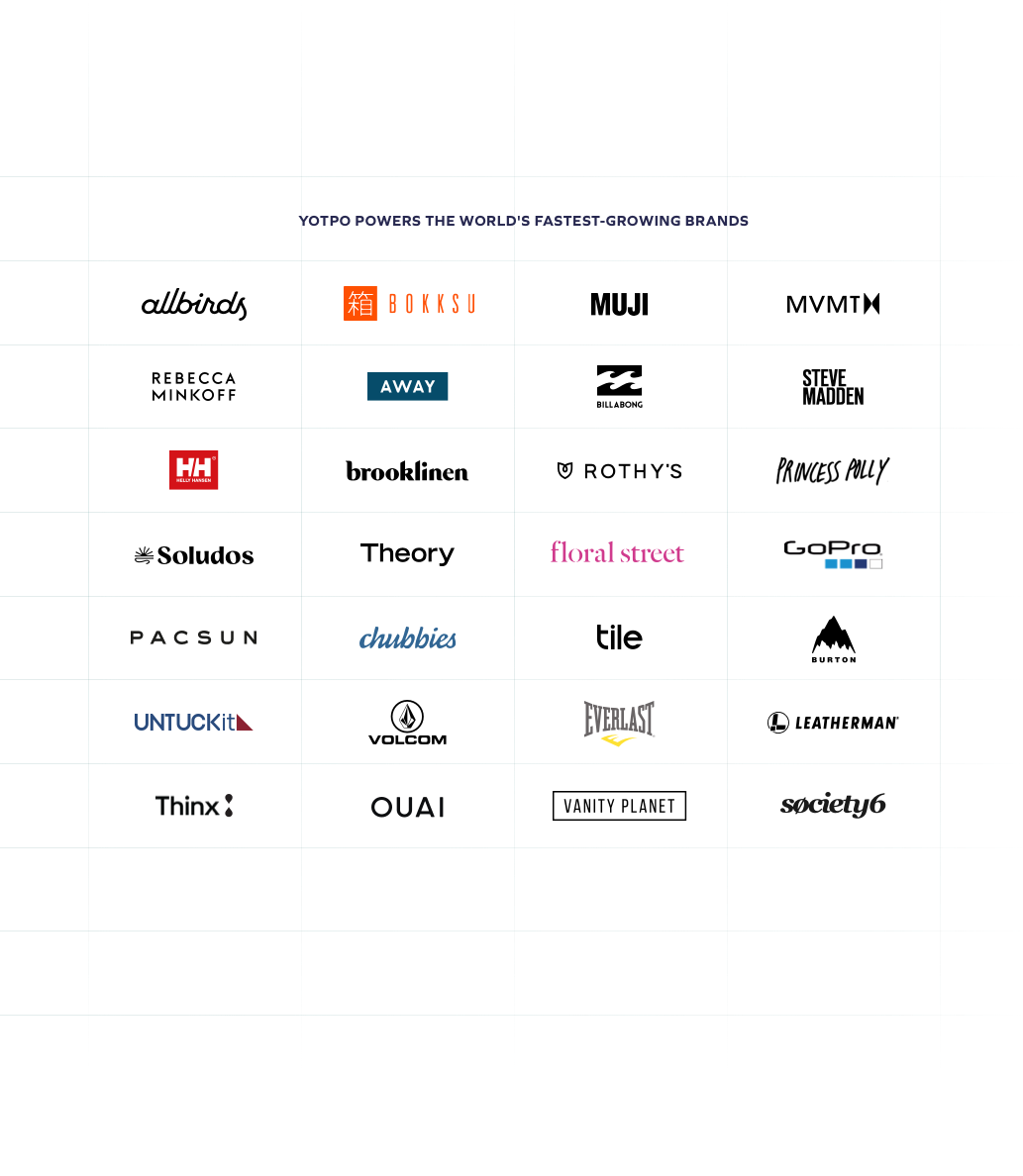Every year, eCommerce marketing trends evolve rapidly, requiring brands to stay ahead with data-driven, customer-centric strategies.
To stand out in today’s saturated eCommerce landscape, marketers must adopt innovative, scalable strategies rooted in customer engagement and retention. A well-crafted eCommerce marketing plan, often overlooked, is essential for building a successful, results-driven strategy.
This guide outlines the critical steps marketers need to craft a high-impact eCommerce marketing strategy. Tailor these strategies to your unique business needs and drive measurable growth.
What’s the Importance of a Good eCommerce Marketing Plan?
Just as a blueprint is essential to constructing a building, a well-crafted marketing plan provides the strategic direction needed to drive meaningful outcomes in eCommerce. Clear, measurable goals empower your team to make informed decisions and chart a course toward sustained growth. A structured plan also enables precise budget allocation, ensuring resources are invested in high-impact areas that maximize return on investment.
Consistency is critical for brands of all sizes. Delivering a unified brand experience across every customer touchpoint builds trust and recognition—both of which are easier to achieve through coordinated, intentional planning.
Successful campaigns serve as valuable models for future initiatives, offering insights that can be adapted to evolving trends and key seasonal opportunities. Long-term growth requires a scalable strategy—one that identifies areas for optimization and supports continuous improvement.
Improvement begins with insight. Robust reporting and analytics illuminate performance gaps and opportunities, but these tools are only effective when success metrics are clearly defined from the outset.
Ultimately, a marketing strategy does more than outline activities—it establishes direction, clarifies objectives, and guides your business toward measurable success.
Today’s eCommerce Marketing Challenges

Modern eCommerce businesses face a unique set of challenges that make strategic marketing planning more important than ever:
- Increased Competition: The barrier to entry for online stores continues to decrease, resulting in more crowded marketplaces across virtually all product categories.
- Rising Acquisition Costs: The cost of acquiring new customers through paid channels has increased dramatically, making customer retention and lifetime value optimization essential components of sustainable growth.
- Privacy Changes: Evolving privacy regulations and platform changes have limited access to third-party data, requiring brands to develop stronger first-party data strategies.
- Channel Fragmentation: Customers now discover and interact with brands across an expanding array of touchpoints, necessitating coordinated multi-channel approaches.
- Customer Expectations: Today’s shoppers expect personalized experiences, seamless transactions, and authentic brand relationships—all of which require sophisticated marketing capabilities.
A comprehensive marketing plan helps eCommerce businesses navigate these challenges by creating intentional strategies rather than reactive tactics.
Do I Need a Team to Develop a Marketing Campaign?
The size of your company plays a key role in determining the structure of your marketing efforts. While building a dedicated eCommerce marketing team is not strictly necessary, having specialized support can significantly enhance the quality, efficiency, and scalability of your campaigns.
For solo entrepreneurs or small businesses, a full-scale marketing team may not be feasible—or required. Targeted strategies with a limited scope, especially those focused on a single channel, can still drive meaningful results when executed thoughtfully.
Budget constraints are one of the primary reasons businesses delay building a marketing team. If that’s your situation, it’s essential to prioritize simplicity and focus your resources on the most effective channels for your audience. Avoid spreading efforts too thin across multiple platforms or adopting overly complex strategies that could dilute impact and strain resources.
Building Your eCommerce Marketing Team
Creating an effective marketing team requires assembling professionals with complementary skills aligned with your strategy. Here are the key roles to consider:
- Marketing Strategist: This leader understands your business goals and audience and develops the overarching plan that guides all marketing efforts.
- Content Creators: With 70% of users preferring articles over ads to learn about companies, content specialists—including writers, designers, and video producers—form the backbone of modern marketing.
- SEO Specialist: Search optimization experts are critical, as SEO generates 1,000% more traffic than social media. They ensure your content and product pages are discoverable by the right audience.
- Paid Media Specialist: This role manages your advertising budget across platforms, optimizing campaigns for maximum return on ad spend.
- Data Analyst: Analytics professionals track KPIs, identify opportunities, and provide insights that drive continuous improvement.
- Customer Experience Specialist: This role ensures marketing promises align with actual customer experiences, maintaining consistency across touchpoints.
For smaller businesses, these roles might be combined or outsourced until scale justifies dedicated positions.
Once your foundational roles are in place, consider adding a data analyst to track KPIs and identify optimization opportunities.
Steps to Follow to Create a Great eCommerce Marketing Plan
Crafting an eCommerce marketing plan from the ground up can feel overwhelming, especially in a rapidly evolving digital landscape. While we can’t build your strategy for you, this guide equips you with the essential insights and frameworks needed to develop a plan that drives results.
Below, you’ll find a step-by-step process to help structure and write a tailored marketing strategy for your eCommerce business. These best practices serve as a foundational blueprint—but to maximize impact, be sure to adapt each element to align with your unique business goals, resources, and customer base.
1. Create an Executive Summary
The first step in developing your eCommerce marketing plan is to craft a concise executive summary. This overview should outline your business offering, target market, core challenges, high-level business objectives, and the key strategies you intend to deploy. It’s also helpful to note your current team structure and key stakeholders.
The purpose of this summary is to establish a clear understanding of your business’s current position. You can’t determine where to go without first knowing where you stand.
Avoid including specific budgets or detailed KPIs at this stage—those will come later in your planning process. If you’re launching a new campaign, especially following a successful previous strategy, create a fresh executive summary to reflect your business’s evolved goals and positioning.
As your strategy progresses, refer back to this summary regularly. It serves as a valuable benchmark to evaluate progress and alignment with your original objectives.
2. Set Clear Goals and Define Metrics for Success
Setting clearly defined goals is essential to any successful marketing plan. Research shows that individuals who set goals regularly are 43% more likely to achieve them—and the same holds true for businesses.
Start by defining SMART goals (Specific, Measurable, Achievable, Relevant, and Time-Bound). For example:
- Increase sales revenue by 25% over the next six months.
- Grow email subscriber list by 15% month-over-month.
These goals differ from broad objectives by being actionable and trackable. Identify the key performance indicators (KPIs) most relevant to your campaign—such as conversion rate, average order value (AOV), and customer acquisition cost (CAC).
Set realistic and attainable goals to avoid overwhelming your team. Ambitious targets are valuable, but early wins are critical for momentum. You can adjust and expand your objectives as you reach key milestones.
Be sure to attach timelines to each goal. Defined deadlines create urgency, encourage accountability, and help guide strategic decisions throughout the campaign.
3. Study Your Market
Thorough market research forms the backbone of any effective marketing plan. It allows you to define your target audience, analyze competitors, and stay ahead of industry trends.
Start by developing detailed customer personas based on demographics, behaviors, interests, and preferences. Understanding your ideal customer helps you craft targeted, relevant messaging.
Next, conduct a competitive analysis. Study how your competitors position themselves, the marketing channels they prioritize, and any gaps or weaknesses in their strategy. This insight enables you to differentiate your brand and uncover opportunities to outperform them.
Stay informed on industry trends, including shifts in customer expectations, emerging technologies, and potential risks. Market dynamics can significantly influence your strategy’s success, and proactive awareness positions your business to adapt and thrive.
Effective research empowers you to make informed decisions, minimize risks, and align your strategy with both customer needs and market demands.
4. Choose the Right Marketing Channels
Selecting the right marketing channels is essential for reaching your target audience effectively. Your choice should be driven by your market research and an understanding of where your audience engages most.
For example, if your target customers are older adults and your research shows they prefer email, investing in social platforms like Instagram or Snapchat may not yield results. Even a “successful” campaign is ineffective if it reaches the wrong audience.
Let your audience dictate your channel mix. Multi-channel strategies can be powerful when used intentionally—but avoid overextending your resources. Focus on platforms that align with your business goals and provide the highest return on investment.
Consider the type of content your channels require. Influencer marketing, for instance, thrives on social media, while email marketing may be better suited for personalized offers or product launches.
Ultimately, your chosen channels will shape your content strategy, messaging cadence, and budget allocation—so choose strategically.
5. Establish a Detailed Marketing Budget
A successful marketing strategy requires thoughtful budget planning. While the total spend will vary based on campaign size and scope, allocating funds effectively is key to maximizing ROI.
Distribute your budget across channels based on expected returns. A sample allocation might look like:
- SEO and Content Marketing: 30%
- Paid Advertising: 40%
- Social Media: 15%
- Email Marketing: 10%
- Miscellaneous/Contingency: 5%
Businesses that prioritize and strategically allocate their marketing spend are 13 times more likely to see a positive ROI.
Be detailed in your budgeting to anticipate needs, establish firm limits, and maintain financial control. Importantly, set aside a portion of funds for unforeseen expenses—unexpected costs are a common reason for budget overruns.
A well-structured budget ensures financial control and provides the flexibility to pivot and optimize as your campaign evolves.
6. Define the Core of the Marketing Plan

The next step is to define the core of your marketing plan and strategy. This will depend on your niche, target customers, current business stage, and preferred communication channels.
Although this part of the process is too specific, we want to give you a few thought starters for your strategy. Discuss what you have in mind with your marketing team and come up with innovative ways to engage potential customers.
Consider these proven strategies when developing your core marketing plan:
- SEO and Content Marketing: Begin with thorough keyword research for your niche. Optimize product pages, meta descriptions, and create educational blog content that establishes your brand as an authority while answering prospects’ questions.
- Social Media Marketing: Focus on creating shareable, visually engaging content that resonates with your audience. Develop a consistent posting schedule and voice that reflects your brand identity, utilizing platform-specific formats like Instagram Reels or TikTok videos for maximum engagement.
- Email Marketing: Implement sophisticated segmentation to deliver personalized content to different customer groups. Develop automated workflows for welcome sequences, abandoned cart recovery, and post-purchase follow-ups to nurture relationships throughout the customer lifecycle.
- Loyalty and Retention Programs: Design incentive structures that reward not just purchases but engagement, referrals, and advocacy. Successful programs make customers feel valued while encouraging behaviors that benefit your business.
- Paid Advertising: Leverage platforms like Google Ads, Facebook Ads, and TikTok Ads with carefully crafted targeting and compelling creative. Monitor performance metrics closely to optimize campaigns and maximize return on ad spend.
7. Craft a Content Calendar
Content consistently ranks as one of the most valuable marketing assets, with over 90% of marketers identifying it as essential to their strategies. To effectively manage your content production, a well-structured content calendar is indispensable.
Your content calendar should include:
- Regular content types (blog posts, social media updates, email newsletters)
- Campaign-specific content releases
- Seasonal promotions and holiday marketing
- Product launches and announcements
- Industry events and relevant observances
When building your calendar, consider content dependencies and lead times. For example, holiday campaign planning should begin 2-3 months before the season, while email content might require only a week of preparation.
Use collaborative tools that allow your team to visualize the entire content schedule, track production status, and maintain consistency across channels. This approach not only makes the marketing process less overwhelming but also ensures quality by preventing last-minute content creation.
During your planning sessions, analyze performance data from previous campaigns to identify optimal publishing times and content types for your specific audience.
8. Implement Your Marketing Strategy
With your plan developed and your content calendar in place, the next critical step is implementation. This is where your planning meets execution, and it requires careful coordination across your marketing channels.
When launching your marketing strategy, consider a phased approach rather than activating all elements simultaneously. This allows you to:
- Test individual components before full deployment
- Allocate resources efficiently
- Make targeted adjustments without disrupting the entire campaign
- Build on early successes to create momentum
For eCommerce businesses, implementation often requires integration between your marketing platform and other systems like your online store, inventory management, and customer service tools. Selecting platforms with strong integration capabilities can significantly streamline this process.
During implementation, maintain clear communication within your team about roles, responsibilities, and timelines. Regular check-ins help ensure everyone remains aligned with your marketing objectives and can address challenges as they arise.
9. Track and Adjust

Launch day is just the beginning of your marketing campaign’s journey. The most successful eCommerce marketers understand that continuous optimization based on real performance data is what ultimately delivers exceptional results.
Establish a structured approach to performance analysis by:
- Setting up comprehensive tracking: Ensure all channels and touchpoints have proper attribution and analytics in place before launch.
- Creating a regular review cadence: Schedule weekly quick assessments and more thorough monthly analyses to identify trends and opportunities.
- Monitoring key performance indicators: Focus on metrics that directly connect to your business goals:
- Acquisition metrics: CAC, traffic sources, conversion rates
- Engagement metrics: Time on site, pages per session, email open rates
- Revenue metrics: AOV, repeat purchase rate, LTV/CAC ratio
- Implementing A/B testing: Systematically test variables like headlines, email subject lines, ad creative, and landing pages to continuously improve performance.
- Documenting insights: Maintain a central repository of learnings that can inform future campaigns and strategies.
The most valuable aspect of performance tracking is maintaining objectivity. View underperforming campaigns as opportunities to learn rather than failures, and be willing to pivot when data indicates a need for change. Personal attachment to ideas should never override clear evidence from your analytics.
Measuring Marketing ROI and Effectiveness
Ultimately, your marketing plan’s success will be judged by its return on investment and contribution to business growth. Establishing clear measurement frameworks helps justify marketing expenditures and guides future planning.
Key Performance Indicators by Channel
Different marketing channels require different success metrics:
Email Marketing
- Revenue per email
- List growth rate
- Engagement rate
- Conversion rate
Content & SEO
- Organic traffic growth
- Keyword rankings
- Time on page
- Conversion from organic visitors
Social Media
- Engagement rate
- Audience growth
- Click-through rate
- Conversion from social traffic
Paid Advertising
- Return on ad spend (ROAS)
- Cost per acquisition
- Conversion rate
- Impression share
Attribution Considerations
Customer journeys rarely follow linear paths. Consider implementing:
- Multi-touch attribution models that credit multiple touchpoints in the conversion path
- Customer journey mapping to understand typical paths to purchase
- Incrementality testing to determine true campaign impact
For eCommerce businesses, calculating true ROI should include not just immediate sales but also customer lifetime value (CLV) influenced by marketing efforts.
What Tools Do I Need to Run a Marketing Plan?
Modern eCommerce marketing requires more than just creativity—it demands the right technology to support scalable, data-driven strategies. When evaluating marketing platforms, it’s important to look for solutions that offer key features like multi-channel campaign management, advanced audience segmentation, content creation tools, and performance analytics.
Many platforms provide standard capabilities such as templates, basic reporting, and market research tools. However, what truly sets a solution apart is how well it aligns with your specific business goals and supports every stage of the customer journey—from acquisition to retention.
Yotpo is a strong choice for eCommerce businesses looking for an all-in-one platform that brings together essential tools like email and SMS marketing, loyalty and referral programs, and customer reviews in a single, integrated interface. Its unified approach helps brands streamline their marketing efforts, improve efficiency, and deliver consistent experiences across channels.
With features designed to enhance customer engagement—such as AI-powered targeting, customizable reward programs, and user-generated content tools—Yotpo can support businesses of all sizes in building effective, scalable marketing campaigns.
As you develop your strategy, choosing the right platform can simplify execution, help you make data-informed decisions, and ultimately drive long-term growth.
Marketing Plan Management and Governance
Managing a comprehensive marketing plan requires systematic organization and clear accountability. Here are effective approaches for keeping your plan on track:
Documentation Systems
Establish a centralized repository for all marketing materials, organized by campaign and channel. This can be implemented through:
- Project management tools like Asana, Monday.com, or ClickUp with marketing-specific templates
- Marketing-specific platforms with built-in planning capabilities
- Shared cloud storage with structured folder hierarchies and clear naming conventions
- Internal wikis for process documentation and marketing guidelines
Team Structure and Responsibilities
Define clear ownership for each component of your marketing plan:
- Assign channel owners responsible for performance in specific marketing channels
- Create cross-functional teams for major campaigns
- Establish review and approval workflows for content and creative assets
- Schedule regular plan review meetings to assess progress and make adjustments
Marketing Operations
Implement operational processes that support efficient execution:
- Standardize briefing documents for new initiatives
- Create templates for regular reporting
- Develop clear escalation paths for addressing challenges
- Establish risk management protocols for campaign contingencies
This structured approach removes ambiguity, reduces stress, and allows marketing leaders to focus on strategic decisions rather than administrative details.
Final Thoughts
A well-crafted marketing strategy is essential for driving website traffic, boosting online sales, and establishing your eCommerce brand in an increasingly competitive marketplace. By following a structured planning process, you can differentiate your business from competitors that rely on ad hoc tactics.
Successful eCommerce brands understand that effective marketing combines strategic planning with the right technology. Investing in a robust marketing platform not only streamlines execution but also allows your team to focus on creative, customer-centric initiatives—rather than juggling disconnected tools.
When evaluating marketing solutions, look for platforms that offer integrated capabilities, flexible pricing, and eCommerce-specific features that align with your growth goals. Tools like Yotpo support businesses with a comprehensive suite of functionalities—from email and SMS marketing to reviews, loyalty programs, and user-generated content—all accessible through a single, unified platform.
What sets Yotpo apart is its ability to centralize customer data, enabling brands to deliver consistent, personalized experiences while gaining valuable insights for continuous optimization. Its modular approach allows you to start with the essentials and scale over time, without paying for features you don’t yet need.
Explore our blog for expert insights, actionable strategies, and the latest trends to help your business thrive in a competitive eCommerce landscape.













 Join a free demo, personalized to fit your needs
Join a free demo, personalized to fit your needs